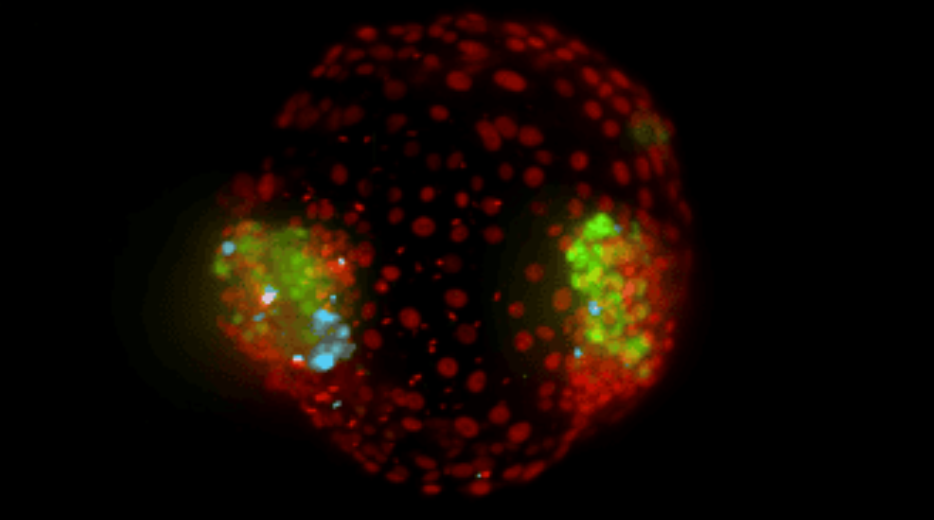A group of scientists has successfully grown a human twin embryo from stem cells. This research paves the way for more affordable biomedical care.
© Maastricht University

Researchers have succeeded in growing an embryo structure of human identical twins purely from stem cells. Thanks to this culture, scientists from the biomedical MERLN Institute at Maastricht University and the Maastricht University Medical Center are seeing for the first time how twins are formed.
Accelerated expansion of the blastocyst - a type of sac containing stem cells from which new life emerges - splits the embryo in two. This milestone is a result of a technological platform that has been unraveling ever-deeper biological secrets for several years, enabling the controlled growth of cells, tissues, organs and embryos.
The goal is to use this research to make improved (bio)medical care widely accessible and affordable. Initially, the research now focuses on the healthy implantation and development of embryos. The synthetic embryos make it possible to study the first crucial micro-processes previously hidden in the womb.
Medical applications
.The synthetic embryo from stem cells appears to be sufficiently realistic to increase useful effective knowledge about biological embryos. Current research focuses on practical applications: it increases knowledge about miscarriages and infertility and may help in the successful fulfillment of a child's desire or, conversely, improved contraception. Three-quarters of identical twins share the same placenta during pregnancy. How this natural phenomenon comes about was previously unclear, but this finding sheds light on it.
In addition, twin pregnancies are more often associated with complications that arise during early implantation. These can now be mapped and possibly prevented or treated. Furthermore, the technique will zoom in on the emergence, diagnosis, treatment and prevention of numerous (early) human pathologies.
Founder of MERLN, Professor Clemens van Blitterswijk: "Through robotization and machine-learning, we are mimicking biological processes with increasing accuracy, and with the high-throughput method, we are increasing the likelihood that, in this case, we will allow a rare twin embryo to emerge. But with the "found formulas," we can also create tissue-specific stem cells, tissues and parts of organs to cure patients. The idea is that this will become possible in the future on a scale that helps a large number of people while keeping costs down."
Source: Innovation Origins